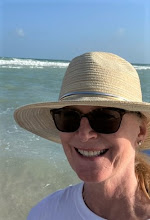Holes were punched in the plot, the storylines were truncated, and Burr’s presence was supposed to fill the empty spaces. He explains what’s happening when the dubbing is absent and his voice-overs are ever-present and annoying. Dubbed and described dialogue is changed almost completely from the original.
Burr is a reporter supposedly stopping in Tokyo for a few days to visit his old college friend, Dr. Serizawa, before Burr has to head to Cairo. Having watched the 1954 film first, I laughed at this as the two gents were obviously nowhere close to being the same age.
Throughout the 1956 film, Burr and his interjected scenes stick out like sore thumbs and he pretty much stays expressionless. As the monster approaches the building from which he’s reporting, he does start to sweat, however. When the building collapses on him, I felt a sense of relief at his disappearance. Unfortunately, due to the re-sequencing of scenes, I guessed from the opening of the film that he survived.
Besides being stiff and expressionless, Burr’s dialogue is horrible. When asked by his home office about this monster, Burr responds, “It’s big, and terrible.” Well said, Mr. Reporter.
Relationships and back stories will be found only in the 1954 film where the characters are given some depth. Takashi Shimura, as Professor Yamane, is a shell of himself in 1956 (if you’re a fan of Kurosawa movies, you will recognize Shimura immediately). You will also miss the still relevant debate about whether the information is too important to disclose to the public.
A crucial scene near the end when Doctor Serizawa has to decide whether or not to use his invention (the Oxygen Destroyer) to kill Godzilla is drastically shortened and changed, and loses most of its impact. Reactions of the love interest go unexplained as does any explanation of how the invention works.
Other poignant scenes are cut, such as a war widow cowering with her child under the onslaught of Godzilla. Mentions of the atomic bomb are gone as is any commentary regarding politicians and bombs.
The last words of the both movies reflect the difference in tone.
1954: But if we keep on conducting nuclear tests, it’s possible that another Godzilla might appear, somewhere in the world, again.
1956: The menace was gone... so was a great man. But the whole world can wake up and live again.
There’s more to say about the special effects (no stop motion animation here) and the monster (he hates trains and lights, and has steamy-looking, fire-spewing breath) but you should view the films for yourself.
I’m left with the sad, painful, last scream of Godzilla before he drops to the sea floor, and my last painful view of the 1956 film.
Here is Director Ishiro Hondo before the Hollywood massacre.









No comments:
Post a Comment